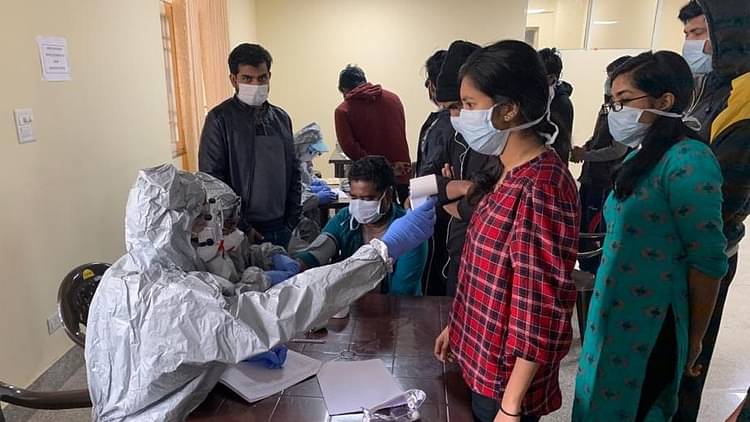With 22,854 new COVID-19 cases recorded on March 10, India is back to the level of July 3, 2020. Just a month ago in February 2021, the number of new cases was around 9000, which was just at the level of June 3, 2020, and which many believed as a signal of success of the containment and prevention strategy being implemented by the government.
However, the present upsurge, up to 2.5 times of the lowest level in February, proves that govt’s strategy has utterly failed after some initial success. The concern is greater than ever before, since the continuous upsurge in the last month remained unbridled despite the vaccination drive being implemented. No doubt, the present containment of COVID-19 and vaccination strategies need a fresh relook.
Where have we gone wrong? It is a most pertinent question, the answer to which may help both the planners and the people at the same time. Putting a cover on the mistakes and failures would further aggravate the situation, though the ruling establishment may find it politically expedient and most tempting in electoral politics. Once we know the answer, it must be made public because people’s lives are at stake. It may also help the administrative and healthcare professionals to avoid further mistakes that are obvious in the new trend of upsurge.
The very first thing we must reconsider is our present strategy of vaccination. It was already known that hundreds of new COVID-19 variants are spreading fast, and many of those already vaccinated may be reinfected. Our healthcare system has therefore no time to relax. It needs to be always alert.
Until now, we don’t know about such cases happening, but that is not a matter of complacency. Since the upsurge is being recorded despite the vaccination drive being in place, it needs to be suitably changed to cater to the needs of the areas where the upsurge is noticed.
While quarantining the infected areas, the government may reconsider the eligibility criteria of vaccination for that particular region to accommodate all the persons to be vaccinated. That may stop further spread of infection.
The next thing for consideration is Covid-appropriate behaviour to be strictly implemented. We have been noticing that despite warnings by experts, it is being flouted everywhere. Election rallies are being organized, marketplaces are full of people, public transports are running without precautions, and even working places are seen with people, most of the time without masks.
This is a sure recipe for faster spread of infection. Everyone, from common people to the officials responsible for implementing Covid-appropriate behaviour have gravely faltered. We see only a blame game, especially resorted to by politicians who are flouting it themselves but blaming their rivals day in and day out.
The matter is serious and cannot be ignored especially in the six states – Maharashtra, Kerala, Punjab, Karnataka, Gujarat and Tamil Nadu – that account for 83.76 per cent of fresh COVID-19 cases in the country. Political gatherings have become common everywhere in the country, and these states are not an exception.
Maharashtra, the worst-affected state of the lot, reported 13,659 Covid-19 cases on Wednesday, its first one-day spike in excess of 13,000 in 2021 and highest in 154 days. The state has till date recorded 2,252,057 infections.
In some of the states, local body elections were held and assembly election in Tamil Nadu are due soon. Political and other social gatherings must be regulated strictly, and only advisories issued by Election Commission and other authoritative bodies are not sufficient to stop the upsurge.
The other states which must remain highly alert are Andhra Pradesh, Delhi, Uttar Pradesh, West Bengal, Odisha, Rajasthan, Chhattisgarh and Telangana.
On March 11, Union Health Ministry’s bulletin put the number of infections in the country at 11,285,561, and the number of active cases at 1,89,226. A total of 1,58,189 people have already died of this infection.
The upsurge is serious for it is the third time in 2021 that the country’s daily caseload has crossed the 20,000-mark - the previous two instances were in the first week of January when the first wave of Covid cases was receding. It is in this context that testing, tracking and quarantining need to be vigorously implemented and followed up. Healthcare facilities also need to be upgraded.
The tests conducted in India so far have crossed 22 crore-mark and the daily positivity rate stood at 2.43 per cent. The positivity rate is still high which should be a matter of concern. Since India has a population of 138 crore, the number of tests must be sufficiently increased.
The vaccine drive was launched on January 16, and only 2.52 crore doses have been administered till date. We are able to administer only a little above 9.20 lakh dozes daily. The progress is obviously very slow despite the fact that the vaccine strategy has been changed and shifted from public sector to private sector.
Of the 2,52,89,693 vaccine doses administered, 71,70,519 healthcare and 70,31,147 frontline workers were given the first dose, while 39,77,407 healthcare and 5,82,118 frontline workers the second dose, according to the provisional report. Thus, vaccination obviously needs to speed up, since India needs to vaccinate at least 700 million people before the country can dream of any ‘herd immunity’, according to a sero–surveillance report, though AIIMS director Dr. Randeep Guleria recently warned that “herd immunity is very difficult to achieve and one should not think of it in practical terms in India, especially in the time of variant strains of COVID-19 and waning immunity.”
Lockdown and other containment measures are being resorted to by some state governments to stop the new upsurge, but these are the easiest measures. We actually need to strengthen the healthcare system, suitably change the present strategies quickly, and enforce Covid-appropriated behaviour. Awareness drives must continue with renewed vigour. Our own failures are more responsible for the recent upsurge than the new variants of COVID-19.
































